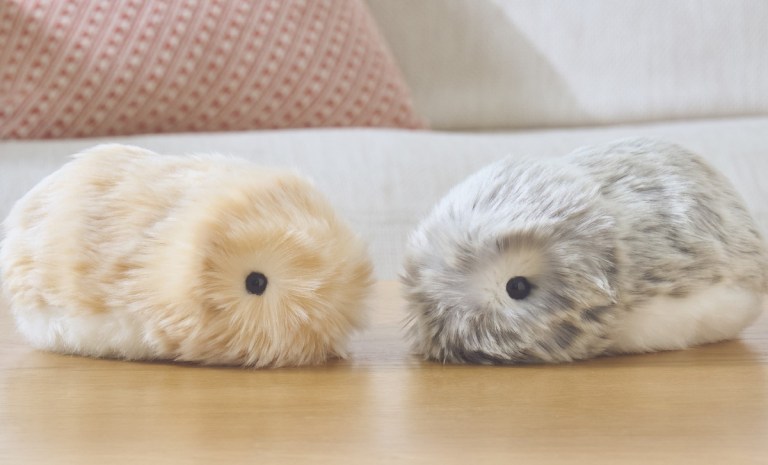
Meet the new breed of best friend: artificial intelligence pets that are padding into homes, no kibble required.
These digital companions are bridging the gap between cold gadgetry and warm support, offering a unique blend of high-tech features and emotional connection. As the lines blur between smart devices and furry friends, tech enthusiasts and comfort-seekers are drawn to these cutting-edge critters.
Casio launched its AI-powered furry robot pet, Moflin, in Japan. Described by TechRadar as looking like “a large guinea pig, without the mouth” or “a Porg from Star Wars, but horizontal,” Moflin is designed to be held and cuddled, providing an emotional connection similar to a real pet but without the full responsibilities of caring for a living animal.
These AI companions represent a growing trend at the intersection of tech and wellness as companies explore ways to meet the increasing demand for stress relief and emotional support. Beyond the initial purchase, AI pets offer tech firms the potential for recurring revenue through subscription-based services, potentially transforming traditional business models in the gadget market.
“This new product could further increase consumer spending in the wellness and tech gadget sector,” Olivia Tapper, co-founder of DTC SEO Agency and the “dog mom” behind PetPortraits.com, told PYMNTS. “Casio’s Moflin solves specific pain points designed to provide comfort and support. This could be a good product for those who aren’t in a situation where they can buy a real pet.”
Reminiscing about her digital pet experiences, Tapper said: “I grew up with the Tamagotchi toys, which proved that people enjoyed caring for their digital pet. This is the next level of that.”
Moflin, priced at 59,400 yen (about $400), will start shipping Nov. 7. Casio offers an optional subscription service called Club Moflin to cover repairs, including fur replacement, showcasing the potential for recurring revenue in this new market segment.
Moflin’s AI capabilities allow it to develop its unique personality through daily interactions with its environment. According to Casio, Moflin will “evolve” emotionally, becoming attached to its owner over time. However, unlike real pets, Moflin’s emotional state is only visible through a companion app, which some may find less intuitive than reading an animal’s body language.
The robot pet has a 5-hour battery life on a single charge and requires a 3.5-hour power boost in its “cute charging bed” to continue providing emotional support, per the TechRadar report.
While Moflin is making waves, it’s not alone in the AI pet market. Several companies have been developing and refining their versions of artificial companions. Sony’s Aibo, a pioneer in the field, was first introduced in 1999 and relaunched in 2017. The latest model, ERS-1000, is a robotic dog that uses AI to learn and respond to its owner. Its nose-mounted camera can perform tricks, respond to voice commands and take photos.
Tombot’s Jennie is explicitly designed for seniors and individuals with dementia. This robotic Labrador retriever puppy focuses on providing comfort and companionship with realistic movements and responses.
Taking a different approach, Yukai Engineering’s Qoobo is a cushion with a wagging tail, focusing solely on the comforting aspect of pet ownership.
For the tech-savvy, Elephant Robotics offers MarsCat, an interactive robotic cat powered by a quad-core Raspberry Pi. It features face recognition and an open-source platform for programming new behaviors.
Meanwhile, Ageless Innovation’s Joy for All companion pets, including cats and pups, is designed specifically for older adults. They offer lifelike fur and pet-like sounds to provide comfort and reduce loneliness.
When it comes to subscription services like Club Moflin, Tapper said she sees clear benefits for companies.
“A subscription service is great for AI-driven companies,” she said. “You have a returning customer who pays periodically, and the cost of acquiring the customer decreases over time.”
“You can also add new functionalities and features as you evolve the products based on customer feedback,” she added. “This could lead to a growing customer base and potential up-sells.”
However, Tapper raised a point about data privacy,
“It’s important to note, in this age of AI and data management, as a customer, you might want to understand how your data is used,” she said. “Is the device listening to you, and how is your data managed?”
On the question of whether emotional attachments to AI pets could lead to long-term loyalty, Tapper emphasized the importance of customer satisfaction.
“If the product and service meet the customer needs and expectations, it’s likely to build and nurture a loyal customer base,” she said. “Building a business is so much more than selling a product. You need to take care of the customers after the sales and resolve issues that might arise.”
Despite her enthusiasm for the technology, Tapper answered a resounding no when asked if she would buy an AI pet herself.
“I have a dog and love the connection we have,” she said. “He’s my fur baby, and I wouldn’t replace him with an AI pet. Personally, I’d rather buy a real pet.”
However, she acknowledged that AI pets might appeal to some.
“I can see situations where people might get an AI pet; for instance, it’s less responsibility and commitment,” she said.
For all PYMNTS AI coverage, subscribe to the daily AI Newsletter.